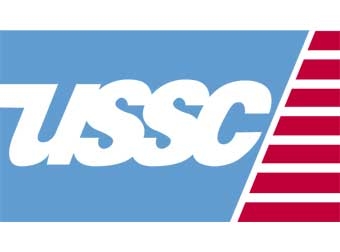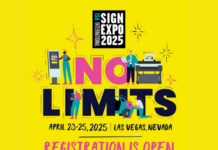USSC has now made available a new and updated edition of the landmark 2003 publication USSC Best Practices Guideline Standards for On-Premise Signs.
Since its initial publication, the USSC Sign Standards have proven to be a unique and extremely valuable reference, and have been widely distributed within the sign industry to sign owners, sign regulators, and the planning community, and have been used to obtain countless sign approvals, sign variances, and sign code reviews.
The new 2015 edition of the Best Practices Standards follows in the tradition established over twelve years ago: the United States Sign Council and its research arm, The United States Sign Council Foundation, continued its research into the legibility and traffic safety implications of signs via studies conducted at the Pennsylvania (now Larson) Transportation Institute at Penn State.
What’s new for 2015:
Standards for parallel signs (wall signs)
The original USSC Standards created benchmarks for sign visibility and legality in regard to “perpendicular” signs, or freestanding signs. The Standards were not transferable to “wall signs.” After the original Standards were published, the USSC conducted additional research in regard to “parallel” signs or wall signs – signs that are typically mounted on buildings and structures that face the street. Researchers found that legibility factors related to parallel sign orientation and setbacks required that messages on parallel signs be larger as compared to messages on perpendicular signs, to ensure appropriate sign legibility. The new Standards help fill this gap
in guideline practices.
Standards for sign illumination at night
Since the original USSC Standards were published, there has been an explosion of interest in outdoor lighting at night, and sign lighting has come under scrutiny as a result. Realizing that there was a lack of knowledge and research in this area in regard to on-premise signs, the USSC funded four (4) separate research projects that examined the relationship between on-premise sign lighting, sign visibility and legibility requirements for traffic safety, and environmental lighting concerns. The new USSC Best Practices Guidelines contain standards for onpremise sign lighting at night, and help address a variety of concerns by explaining concepts such as sign brightness, best sign lighting method for drivers to promote traffic safety, and the environmental impact of on-premise
sign lighting, based on research.
The USSC Standards are intended to help sign companies, sign users, planners, and regulators alike better understand the functioning and informational transfer capacity of roadside signs, and contain specific details and computational formulae and charts covering a variety of concepts derived from the Penn State Research. A free copy can be obtained by visiting the USSC Web site. Click on the paragraph describing the new standards for your FREE PDF Download or go directly to the Standards page. Please contact Rick Crawford, USSC Legislative Consultant, at [email protected] with any questions.











